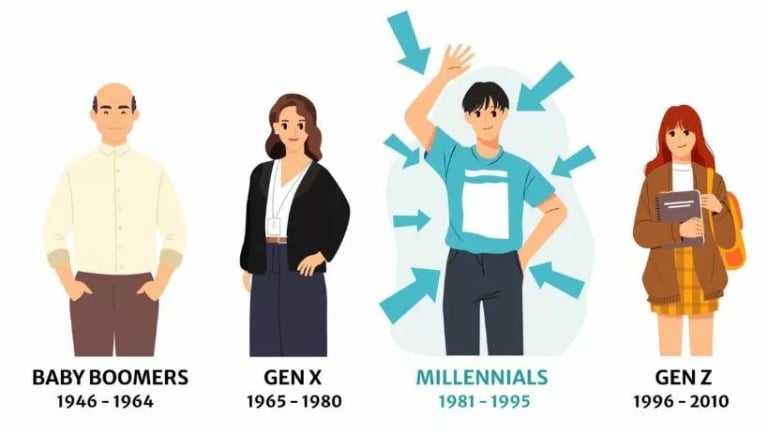
A growing trend among young adults—particularly millennials and Gen Z—is shaking the insurance industry to its core. Recent studies show that nearly 40% of adults under 35 are opting out of essential insurance coverage, from health and auto to renters and life policies. This comprehensive 2,000+ word analysis explores the complex reasons behind this risky movement, its financial implications, and what it means for the future of insurance.
A. The Startling Statistics
1. Coverage Drop-Off Rates by Category
-
Health Insurance: 28% of young adults uninsured (up from 18% in 2015)
-
Auto Insurance: 12% driving uninsured (3x higher than older demographics)
-
Renters Insurance: 63% without coverage (despite $50K+ in personal property)
-
Life Insurance: 72% of millennials have no policy
2. Geographic Hotspots
-
Urban areas show 45% higher opt-out rates
-
Southern states lead in auto insurance avoidance
-
Coastal cities see most health insurance declines
B. Root Causes of the Insurance Exodus
1. Financial Pressures
-
Student loan debt averaging $37,000 per borrower
-
Rising housing costs consuming 45% of income
-
Stagnant wages failing to keep pace with premium increases
2. Cultural Shifts
-
“Invincibility complex” among digital natives
-
Gig economy workers falling through coverage gaps
-
Distrust of traditional financial institutions
3. Technological Disruption
-
Comparison apps creating analysis paralysis
-
On-demand services reducing perceived need for coverage
-
Cryptocurrency investments replacing traditional protection
4. Systemic Industry Failures
-
Opaque pricing models alienating digital natives
-
Inflexible products failing to match modern lifestyles
-
Poor mobile experiences compared to other financial services
C. The Dangerous Consequences
1. Personal Financial Risk
-
Average medical bankruptcy: $50,000 in uncovered bills
-
Totaled car without insurance = $22,000 average loss
-
Apartment fire could mean $35,000 in unrecovered possessions
2. Societal Impact
-
Hospitals facing $7B in uncompensated care annually
-
Insured drivers paying $100 more yearly to cover uninsured motorists
-
Rental property owners increasing deposits by 300%
3. Industry Repercussions
-
Insurers losing $12B in potential premium revenue
-
Actuarial tables becoming less predictable
-
Pressure to develop millennial-friendly products
D. Innovative Solutions Emerging
1. Micro-Insurance Products
-
Hourly auto coverage for gig workers
-
Health insurance that covers “just emergencies”
-
Pay-per-mile vehicle policies
2. Tech-Enabled Alternatives
-
Peer-to-peer insurance collectives
-
Blockchain-based parametric insurance
-
AI-powered dynamic pricing models
3. Behavioral Economics Approaches
-
Gamified wellness programs
-
Social media-inspired group discounts
-
“Set it and forget it” automated policies
4. Regulatory Responses
-
State mandates for “bare bones” affordable plans
-
Student loan payment insurance products
-
Employer-sponsored portable benefits
E. How Young Adults Can Protect Themselves
1. Strategic Prioritization
A. Health insurance before entertainment subscriptions
B. Renters insurance before luxury purchases
C. Auto liability coverage before discretionary spending
2. Smart Shopping Tactics
A. Using InsurTech apps for instant comparisons
B. Negotiating group rates through alumni associations
C. Timing purchases during industry “war periods”
3. Creative Risk Management
A. Health cost-sharing ministries as alternatives
B. High-deductible plans paired with HSAs
C. Usage-based insurance programs
F. The Future of Youth Coverage
1. 2025 Projections
-
50% of policies sold through non-traditional channels
-
AI brokers replacing human agents for basic coverage
-
“Insurance as a service” subscription models
2. Generation Alpha Preview
-
Embedded insurance in all digital transactions
-
DNA-based life insurance underwriting
-
Autonomous vehicle coverage paradigms
Conclusion
While young adults’ retreat from insurance coverage presents serious risks, it’s also forcing much-needed innovation in a traditionally stagnant industry. The coming decade will determine whether insurers can adapt quickly enough to protect this crucial demographic—and whether millennials will recognize the value of protection before experiencing catastrophic losses.
Tags: millennial insurance, young adults uninsured, insurance trends, Gen Z coverage, financial risk, insurance alternatives, InsurTech, peer-to-peer insurance, micro-coverage, future of insurance

















